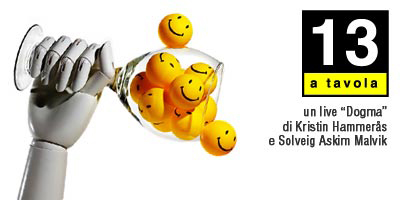
Here are two recipes for getting a short game rolling in no time:
1-2-3 Larp
Created by Ingebjørg Berg Holm and Torstein Utne
- Choose a setting which is easy for everyone to relate to (examples: class reunion, saloon in the wild west, 70s celebrity party).
- Decide on a time and place and invite people.
- Ask everyone to prepare a basic character concept that fits the setting.
- Ask everyone to write down a secret for the character. Also write the name of the character and the player on this piece of paper. The secret should be something that will be fun to play when being revealed. It shouldn’t be revealed to anyone else before the game. Before the game starts everyone puts the secrets into a bowl. Everyone then draws a piece of paper with someone else’s secret (redraw if you draw your own). During the game everyone is responsible for revealing this secret. How they know the secret is improvised.
- The game ends at a predetermined time and by then all secrets should have be revealed.
The Crisis Meeting
Created by Sonja Erlenkamp
The participants decide jointly on an institution which is experiencing a crisis of some sort (examples: a university department, a small business or a youth organisation). Each participant chooses a character which has a function in this setting (examples: manager, board member, volunteer etc.). The player gives the character a name and writes three sentences that describes the character. Everyone then receives a letter or email with an urgent invitation to a meeting that will discuss “the present crisis in the institution.” It is however not clear who has sent the letter and what the crisis really consists of. The players are told that their characters will assume that they know the nature of the crisis. What the crisis really is as well as everything else is improvised by the players as the game is played. The game continues until the characters themselves conclude the meeting.
 A party. A predestined meeting. A web of interlacing stories. We gather our inspiration from the director, playwright, and theater theorist Bertolt Brecht: his acting theory of Verfremdung and Haltung; his aesthetics, which were made widely known through the films Dogville and Manderlay by Lars von Trier; and his concern with social problems, morality and relationships.
A party. A predestined meeting. A web of interlacing stories. We gather our inspiration from the director, playwright, and theater theorist Bertolt Brecht: his acting theory of Verfremdung and Haltung; his aesthetics, which were made widely known through the films Dogville and Manderlay by Lars von Trier; and his concern with social problems, morality and relationships.







